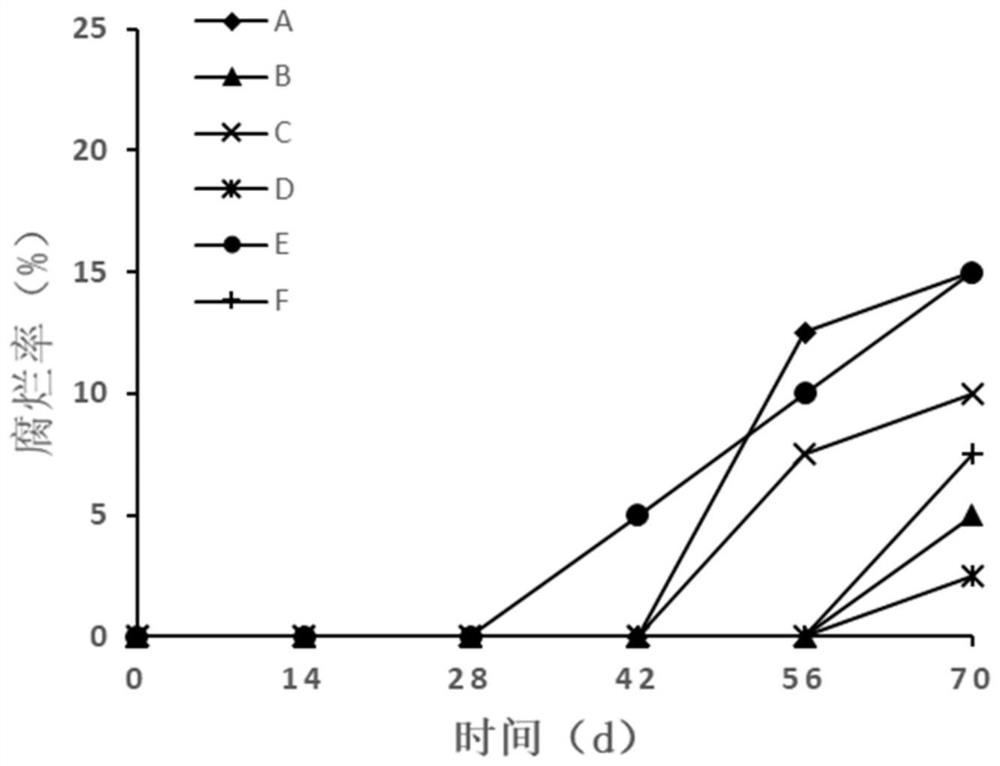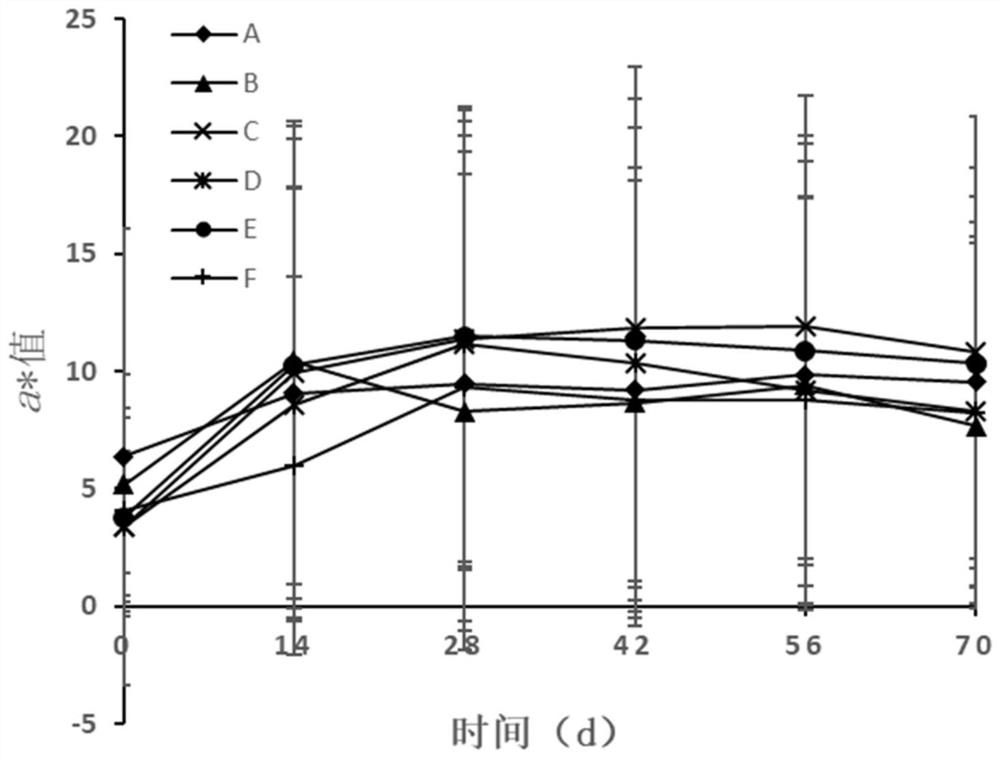Edible fresh-keeping agent for honey peach fruits after harvest, and application of edible fresh-keeping agent
A preservative and fruit technology, applied in the field of edible preservatives for post-harvest peach fruits, can solve the problems of less use, and achieve the effects of easy operation, good storage effect, good quality and commerciality
- Summary
- Abstract
- Description
- Claims
- Application Information
AI Technical Summary
Problems solved by technology
Method used
Image
Examples
Embodiment 1
[0017] 1. Prepare a post-harvest edible preservative for peach fruit, which is composed of rhamnolipid and limonene, and the concentration of the working solution used is 0.5% (v / v) of rhamnolipid and 100 mg / L of limonene;
[0018] 2. Use edible preservatives for peach preservation:
[0019] (1) When the peach fruit is harvested, pick it gently to avoid damage;
[0020] (2) Select the picked fruit, select the fruit with uniform size, no disease, no damage;
[0021] (3) The edible preservative is sprayed and sprayed on the peach fruit for 60 seconds;
[0022] (4) The treated fruit is dried and stored under a suitable temperature condition.
Embodiment 2
[0024] The peach fruit used in the experiment is a hard peach. The fruit material was collected in Linyi City, Shandong Province in October 2019. After harvest, the fruit with uniform size, no mechanical damage, and no pests and diseases was selected. After being treated with different preservatives, it was transported back to Zhejiang the next day The Fruit Tree Science Research Institute of the College of Agriculture and Biotechnology of the University carries out storage (10°C, RH 90-95%), and the composition and concentration of the antistaling agent formula are as follows:
[0025] Treatment A: directly put into storage after harvesting;
[0026] Treatment B: 0.5% modified pectin + 0.5% rhamnolipid, atomized and sprayed on the fruit surface, dried and stored in warehouse;
[0027] Treatment C: Natamycin 100mg / L + rhamnolipid 0.5%, atomized and sprayed on the fruit surface, dried and stored in warehouse;
[0028] Treatment D: Limonene 100mg / L + rhamnolipid 0.5%, atomized ...
Embodiment 3
[0039] As the storage time prolongs, the fruit will gradually rot. The rot rate is a direct reflection of the effect of fruit storage and preservation. The experimental results show that among the six treatments of A, B, C, D, E and F, edible preservative formulations B, C, D, and F can significantly reduce the rot rate of peach fruit compared with the fruit of the control group A ; On the 70th day of peach storage, seven groups of fruit rot rates were respectively 15%, 5%, 10%, 2.5%, 10%, 7.5% compared to A and edible preservatives, wherein, treatment group D (0.5 %rhamnolipid+100mg / L limonene) the lowest decay rate (see figure 1 ).
PUM
 Login to View More
Login to View More Abstract
Description
Claims
Application Information
 Login to View More
Login to View More - R&D
- Intellectual Property
- Life Sciences
- Materials
- Tech Scout
- Unparalleled Data Quality
- Higher Quality Content
- 60% Fewer Hallucinations
Browse by: Latest US Patents, China's latest patents, Technical Efficacy Thesaurus, Application Domain, Technology Topic, Popular Technical Reports.
© 2025 PatSnap. All rights reserved.Legal|Privacy policy|Modern Slavery Act Transparency Statement|Sitemap|About US| Contact US: help@patsnap.com



